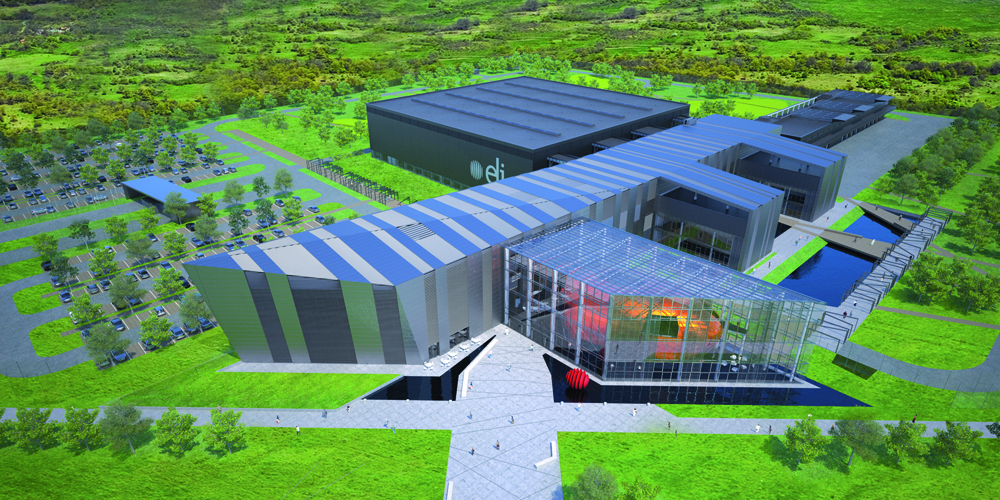
Artist’s conception of the ELI Attosecond Light Pulse Source (ALPS) laboratory now under construction in Szeged, Hungary.
Laser scientists across Europe are developing new types of high-power lasers and secondary light sources for the Extreme Light Infrastructure (ELI), a pan-European research consortium. To that end, a team based in Jena, Germany, has claimed a record-high average-power level for a type of few-cycle pulsed laser destined for one of ELI’s user facilities (Opt. Lett., doi:10.1364/OL.41.004332).
Increasing magnitude
The group, led by Steffen Hädrich of Friedrich-Schiller-Universität Jena, investigated a type of laser that produces pulses lasting less than two cycles of the driving electrical field. Starting with a 660-W fiber laser with a 240-fs pulse duration, the team applied two stages of nonlinear compression to the beam. Each stage consisted of an argon-filled capillary and a chirped-mirror compressor.
After the first stage, the system produced 30-fs pulses with average power of 406 W—a result that the team says could easily convert to the extreme-ultraviolet region via high harmonic generation. After the second stage, which included reflections off a pair of broadband chirped mirrors, the system achieved an average power of 216 W with a pulse duration of 6.3 fs at a central wavelength of 980 nm. This corresponds to a pulse energy of 170 μJ at 1.27 MHz. The average power is about one order of magnitude higher than laser systems employing optical parametric chirped-pulse amplification, according to the authors.
Core ELI technology
The few-cycle attosecond laser is one of the core technologies envisioned for the ELI Attosecond Light Pulse Source (ALPS) user facility, currently under construction in Szeged, Hungary, and set to open in 2018. According to the Jena team, the laboratory wants to provide users with a beam line running a 1-mJ, sub-two-cycle laser producing 100-W average power at a repetition rate of 100-kHz. Such a system could generate soft X-rays with high photon flux. While the laboratory is being built, ALPS has been hosting conferences, including an August 2016 summer school, and its upcoming fourth annual users’ workshop in Szeged next month.
Researchers from the Fraunhofer Institute for Applied Optics and Precision Engineering in Germany, the Université de Bordeaux in France, ALPS and Active Fiber Systems GmbH in Germany were also involved in the Optics Letters experiments.
